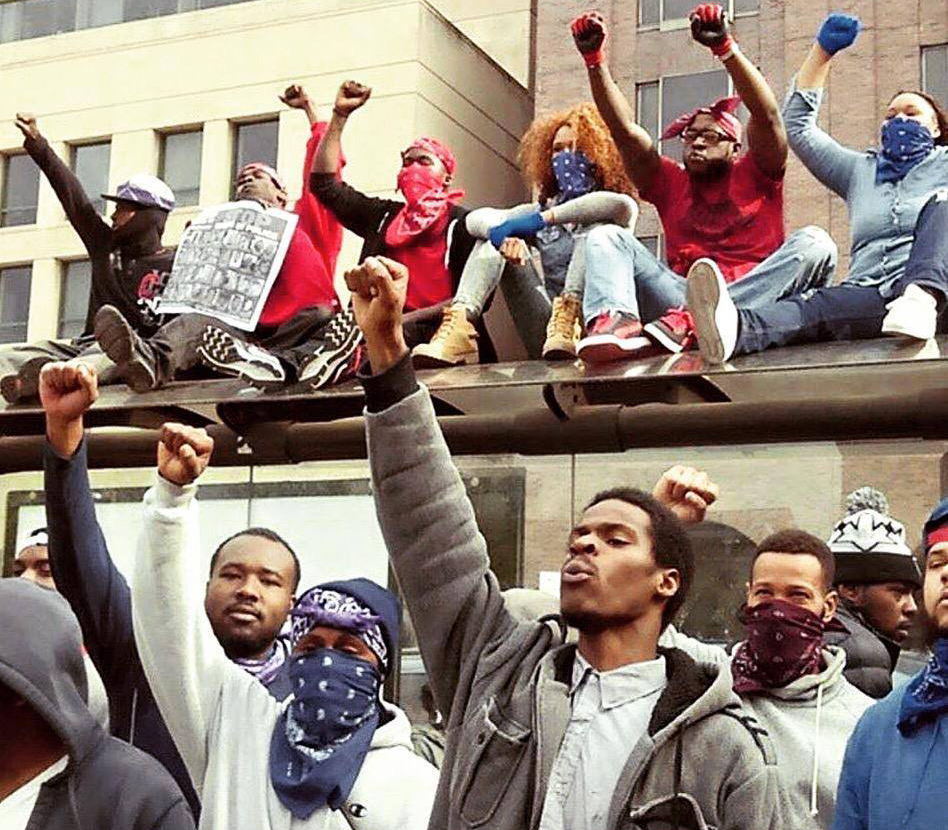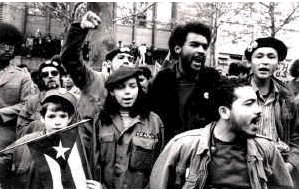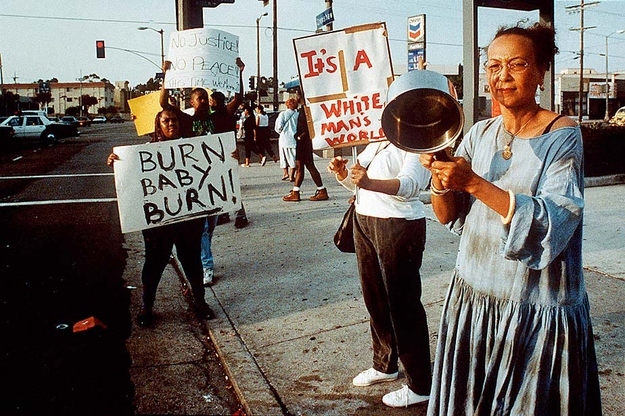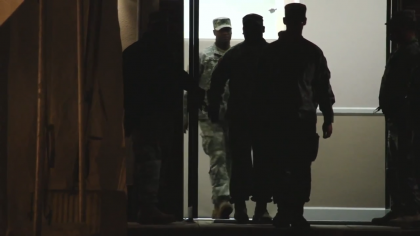Unify or Die: Revolutionary Struggle and American Gangs
“At the end of the day, we don’t need police to protect our community, because we’re going to protect our community ourselves.” – LittleJohn (Baltimore Bloods member)
The publicized deaths of young black men like Michael Brown, Eric Garner and Freddie Gray at the hands of the police has inspired a new generation of black liberation fighters in this country. This new wave of revolutionary consciousness is once again challenging the forces of systemic racism and the global capitalist system that supports it. As a result, local and national grassroots organizations like Black Lives Matter, Black Liberation Project and Heal the Hood have sprung up across the country. These movements have managed to attract a significant proportion of America’s youth from all racial, sexual and religious backgrounds.
However, a much less talked about trend is now happening on our streets: Organized street gangs like the Crips and Bloods are declaring truces and coming together to protect their communities. To many this may seem to be an unbelievable contradiction as many of these gang rivalries are generations old and still running. When one takes into consideration the revolutionary legacy that many street gangs come from, it becomes easier to understand. Similar truces between street gangs have come about during times of political revolt, such as the Watts riots of 1965 or the English riots in 2006. Understanding how and why these truces came about, and why they’ve fallen apart is crucial towards maintaining a sustainable, reliable and resilient self-defense against socio-economic and racial oppression. Towards that end we must first explore the history of America’s street gangs.
Since America’s inception, its children have known violence to be their most effective method of communication. Much of that violence has been exported to far away lands who find themselves unlucky enough to be part of America’s “national interests”. While billions of our tax dollars are spent supporting imperialist wars abroad, a much less publicized war is happening on our own streets. Like most wars this conflict has ravished and plundered the most disenfranchised, desperate and vulnerable communities. Heading the front lines are the organized street gangs who battle each other and the police for money, power and control. Yet hidden beneath the fog of war exists a hidden legacy of oppression and revolutionary struggle. A legacy which gangs share but are also tragically unaware of.
It’s easy to forget this legacy when most of its story tellers are imprisoned or dead, and even easier when we can label them as nothing more than organized groups of ‘morally bankrupt’ thugs. However upon closer inspection, one will see that both the past and present have shown that there is a two-sided character to gangs. A two-sided character that comprises of both revolutionary politics and criminality.
Gangs of Chicago: Street Warfare and the Fight for Survival
“We were not taught to have trust and kindness with each other. Were always taught to believe that our own brothers were out to get us in one way or another. I’ve been taught to respect the white man, but a black brother I was arguin with, I don’t know anything about showing him any respect or fear. I was taught to fear the white.” – Bobby Gore (Founder of the Conservative Vice Lords)
This dual character can especially be seen in Chicago’s gang scene. Chicago’s infamous gang history begins as early as the 1920s. Most gang activity revolved around illegal alcohol operations or “bootlegging” which was controlled by Italian and Sicilian gangs.
By the 1950s, waves of African Americans began moving closer into the city, which caused significant racial tension within Chicago’s massively segregated borders. This tension frequently resulted in marauding white gangs beating up Blacks in the streets for little to no reason other than being black. As a result black “gangs” or “clubs” began springing up as a method of self defense. This is not to suggest that all black gangs were on the same page. Early black gangs like the 14th Street Clovers and the Egyptian Cobra’s frequently fought each other over territory or for sport.
Fighting was viewed in the gangs, as it still is today, as a badge of honor, a “rite of passage” and/or proof of one’s masculinity. Not having this badge could mean the difference between being the oppressed or being the oppressor. Reasons to join the gang at that time varied by individual but often times revolved around the need for protection, and to gain respect in the one’s neighborhood. Gang membership in Chicago’s predominantly black communities was surging in the 1950’s and gang warfare became a normalized occurrence. Gang fights happened so regularly that they would attract crowds of people from the neighborhood who came just to watch.
The Civil Rights Era: Gangs and Community Organization
“I don’t consider myself a straight militant. I’m a thug and my definition of ‘thug’ comes from half street conflict and half of the Panthers who wanted self-determination and self-defense by any means necessary. That’s what came from my family and that’s what thug life is, it’s a mixture.” – Tupac Amaru Shakur
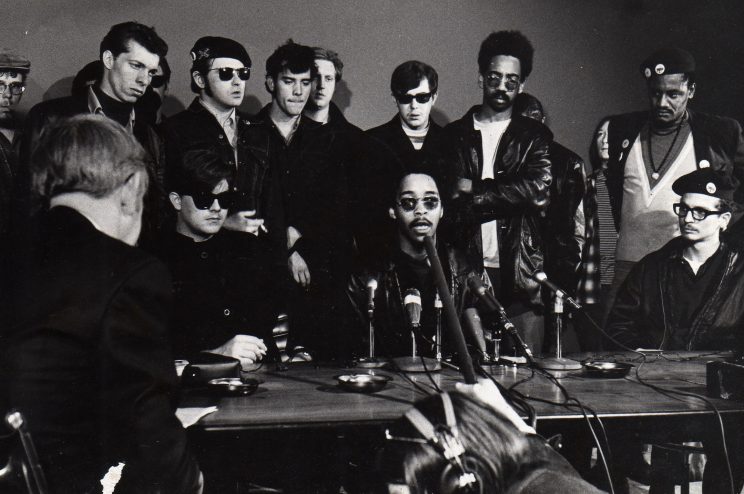
The civil rights era of the 1960’s would produce a radical change in Chicago’s gangs. It was during this time that the biggest African American gangs in the city: the Vice Lords, Blackstone Rangers and Disciple Nation (Gangster Disciples), began getting involved in local political organizing. Most of this organizing activity was conducted between the late 1950s and early 1970s. It was particularly during the civil rights era of the 60’s that the 3 largest gangs in Chicago formed an alliance called “Lords Stones and Disciples” (LSD for short). They began organizing rallies and marches against construction sites demanding that more black people from the local community be hired. These gangs would regularly hold meetings with Fred Hampton of the Illinois Black Panther Party to discuss how to further unite and organize the underprivileged communities of Chicago.
Fred Hampton believed that only a multi-racial alliance of committed revolutionaries could destroy systemic racism. Hampton along with Jose Cha Cha Jimenez of the Young Lords, were instrumental in brokering a multi-racial ceasefire between Chicago’s most powerful gangs. At a press conference in May 1969, Fred Hampton would coin a truce called the “rainbow coalition” (a phrase that Jesse Jackson would later appropriate for use in his failed presidential bid 20 years later). This coalition initially included not just gangs but also the Black Panther Party, a white militant group known as the Young Patriots and a Puerto Rican gang known as the Young Lords. The Rainbow Coalition later expanded to include various left-wing organizations like the American Indian Movement and the Brown Berets.
Reverse Criminology: The Young Lord Way
The Young Lords remains one of the only examples of a street gang that fully made the conversion from criminal gang to revolutionary organization. The Young Lords started off as a typical turf gang in the then predominantly Puerto Rican neighborhood of Lincoln Park, Chicago. The shooting of unarmed 20-year-old Arcelis Cruz sparked what is known historically as “The Division Street riots of 1966”. This particular rebellion against police violence left a deep impression on the residents of Lincoln Park and a renewed political consciousness began to infect the neighborhood.
A myriad of different political groups began mobilizing resources for the defense of Latino neighborhoods and the right to determination. Under the leadership of Jose Cha Cha Jimenez the Young Lords would join the cause and organize direct actions to challenge gentrification and police brutality. They would also begin to take part in International politics and became determined advocates for the Puerto Rican independence movement. Like the Black Panthers, the Young Lords organized community welfare projects and provided free breakfast programs, clothing drives for the under-privileged and free daycare for children. They would also build numerous social centers/health care clinics in order to sustain and grow these social programs. Their high-profile actions would eventually attract national attention and from Lincoln Park they would begin to expand to other cities such as; Milwaukee, New York City, Philadelphia, etc. Jose Cha Cha Jimenez and the Chicago branch would later co-found the multi-racial, anti-racist, and anti-capitalist “rainbow coalition” which included various Caucasian, African American, Latino and Native American social organizations.
Operation COINTELPRO: The State Strikes Back
“You have to understand that people have to pay the price for peace. You dare to struggle, you dare to win. If you dare not struggle, then goddammit you don’t deserve to win.” – Fred Hampton
These developments, of course, did not go unnoticed by the state. The unprecedented show of cross-cultural unity presented a clear and significant threat to systemic racism. So much so that the FBI launched a covert operation to destroy it. The operation code named “COINTELPRO” was led by then FBI director J. Edgar Hoover. He would order his agents to “disrupt, misdirect, discredit, neutralize or otherwise eliminate the activities of these movements and their leaders.” The Black Panthers, Young Lords and the Rainbow Coalition were all prime targets for this operation. The FBI first took advantage of personality conflicts and division within these groups so as to create distrust and confusion. These tactics played a major role in driving a wedge between the Young Lords in Chicago and New York. Additionally, splits were cultivated between Black street gangs and the Black Panther Party.
It was well known that the Black Panthers recruited from the same pool of young people that the gangs did which sometimes led to conflicts between the two. The FBI would take advantage of this fact by sending letters to Blackstone Ranger leader Jeff Fort alleging that Fred Hampton was planning to assassinate him. Ultimately, it would be the FBI that coordinated the Chicago police department’s assassination of Fred Hampton in his sleep. He would not be the only revolutionary to die at the hands of COINTELPRO, as scores of political leaders across the nation were rounded up, murdered, imprisoned or forced on the run.
Gangs Make a Comeback
During the revolutionary period of the 1960’s, street gang activity was dwindling at a rapid pace. This was primarily because the youth pool gangs were recruiting from were joining revolutionary organizations instead. One famous example is a man by the name of Alprentice “Bunchy” Carter, a known Slauson Avenue gang member turned revolutionary who founded the Southern California branch of the Black Panther Party. Carter was one of many former gangsters in California that joined the Black Power movement. In some cities, crime dwindled so much that criminal gangs like the Slauson “Renegades” on the West coast began to disappear altogether. After COINTELPRO, however, gangs began to make a steady comeback. It was shortly after this that two of the most notorious gangs in American history were born: the Bloods and the Crips.
Bastards of the Party: The Birth of the Crips & Bloods
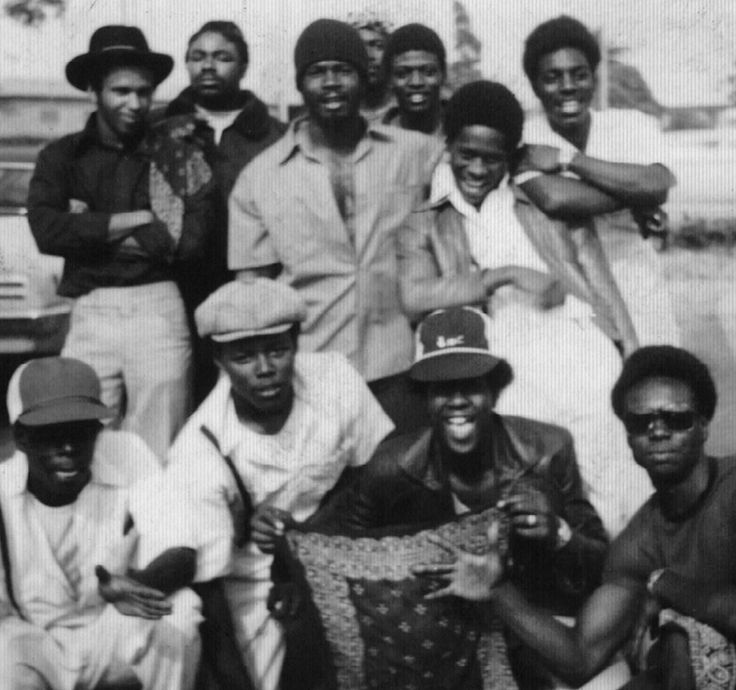
Today’s Crips and Bloods have become world renown for their large numbers, drug trafficking and heinous acts of brutality. What many do not know is that both gangs are the direct result of an incomplete revolution. The Crips started out in the early 1970’s as an alliance of various gangs in Los Angeles. Founded in 1971 by Raymond Washington and Stanley “Tookie” Williams, the Crips (at that time known as the “Cribs” to acknowledge their youthful energy) grew up idolizing Black revolutionaries like Malcolm X and Huey P. Newton and attempted to emulate the Black Panther Party. Some ex-gangsters would even make the claim that “Crip” originally stood for “Common Revolution In Progress“. Founders Tookie Williams and Raymond Washington say that they formed the gang to protect their neighborhoods both from other gangs as well as the racist corruption and brutality of the police. Whether there was a specific revolutionary program remains unclear. It is clear that the youthful Crips wanted to emulate the Black Panthers appearance by sporting black leather jackets. These jackets were typically obtained via robbery or strong arming other youths for theirs. It was this practice of robbing unaffiliated youths of their jackets that allegedly played a crucial role in their inner split and the rise of their now notorious rivals the Bloods.
Crips Expand Their Territory: Bloods Gang is Formed
As Crip influence expanded all over Los Angeles, so too did their opposition. The Crips gained territory by attacking and/or convincing smaller clubs to join. One of these clubs was the Piru Street Family. Crip co-founder Raymond Washington recruited the Piru Street Family in 1971 and the gang subsequently changed their name to the Piru Street Crips. According to Tookie Williams, past rivalries between the Compton Crip and Piru sets sparked up because the Compton Crips were upset that Raymond Washington brought the Piru’s into their alliance. This inner-gang rivalry had existed even before the Crip alliance came into existence and it wasn’t long before tensions completely boiled over. Some sources within the Piru gang claim that the last straw was over the Compton Crips notorious practice of robbing unaffiliated, or “neutral”, youths for their jackets. Whatever the cause, it wasn’t long before the two started clashing and only months later the Piru’s would split off from the Crips. They then called a mass meeting of all major non-Crip gangs in the city to discuss the growing problem of Crip dominance and intimidation. These non-Crip related gangs would go on to form what is now known as the Bloods.
Crack Cocaine: The Spread of Prisons, Drugs and Street War
“We need more jails, more prisons, more courts and more prosecutors.” – George H. W. Bush
Over the coming years, the Crips and Bloods continued to grow in both viciousness and size. Thousands of Blood and Crip sets spread all across the U.S and towards the end of the 1980’s they had become two of the biggest gangs in the country. They spread so quickly that Crips eventually began to turn against other Crips and Bloods against Bloods. This epidemic would only further accelerate with the introduction of crack cocaine to America’s streets. Soon after, L.A. gangs began expanding operations to other cities in pursuit of other drug markets. The state responded by launching its now infamous “war on drugs”, which rages on to this day. At the same time, the state was becoming a major player in the international drug trade. In April of 1989, it became public knowledge that the CIA was actively supporting/facilitating drug shipments from South America into the U.S. They did this in order to fund and support the Contra war of terror against the left wing ‘Sandinista’ government in Nicaragua. Evidence of such activities was officially published in the U.S senate “Kerry Committee report”.
Divide and Conquer: A Guide to Self-Destruction
“Part of the mechanics of oppressing people… is to pervert them to the extent that they become the instruments of their own oppression.” – Kumasi (Slausons gang member)
The persistent government strategy of disrupting and neutralizing left-wing social movements had its intended effect. Millions of poor disenfranchised youth misdirected their anger and frustration against their very own people instead of the racist and brutal police state that created and their miserable conditions. With the rise of crack also gave birth to the “prison industrial complex” and whole generations were and continue to be locked up by this massive system of injustice and self-perpetuating crime. As a result the rich became even richer and their power became greater. The poor became even poorer and even more dysfunctional. For the ruling class, everything could not have worked out better had it not been for yet another unforeseen rebellion in the year of 1992 in Los Angeles California.
Los Angeles Uprising:
“We asked ten years ago. We was asking with the Panthers. We was asking with them, the Civil Rights Movement. We was asking. Those people that asked are dead and in jail. So now what do you think we’re gonna do? Ask?” -Tupac Amaru Shakur
In early 1990’s tensions between the police and the South Central community of L.A. couldn’t have been higher. The increased level of state oppression brought upon by the racist “Anti-Drug Abuse Act of 1989″ created an atmosphere of extreme resentment for the police. The mass publicized beating of Rodney King and the acquittal of the officers responsible lit the match to a powder keg that had been waiting to blow. And when it did, it became so uncontrollable that the LAPD was quickly overwhelmed and had to call in the National Guard to quell the uprising. When the flames died out, thousands of people had been arrested and or wounded, dozens were killed, and over a billion dollars worth of property damage was recorded. To this day the L.A. rebellion remains a hotly discussed topic on the issue of systemic racism in this country and the media continues to use it as a reference point when discussing today’s race rebellions. However, what the media refused to talk about back then, and even still today, was the fact that one of the largest and long-lasting gang truces in history had been formalized just a day before.
Watts Peace Treaty
“If all the gangs in the world unify we stand a chance against the military tonight.” – Ab Soul (Carlson, CA Rapper)
The Watts gang peace treaty of 1992 had been a long time coming. Efforts to get gangs to stop warring with each other in L.A.’s mostly Black neighborhood of Watts had been brewing as early as 1988. It wasn’t until the impending war with the LAPD that a definitive agreement was forged. The agreement included all the major gangs in Watts. “When the riots took off, other neighborhoods that were on the fence wanted to join in after they seen that the attacks were not going to stop and that the only power we had was in our unity”, according to Twilight Bey, a former gang member who helped forge the Watts treaty. Indeed after the initial Watts Treaty, most of the Black gangs in L.A. had declared that they too were no longer at war with each other and would now be working together to rebuild their shattered communities.
Though the truce did not hold, it remains one of the most poignant examples of how bitter enemies can become allies and protectors of their communities. In the immediate aftermath of the riots, the Bloods and Crips composed a joint reconstruction plan to rebuild the city brick by brick. Crips and Bloods could walk into each others neighborhoods without fear of retaliation. Undoubtedly the most beneficial side effect of the truce was the immediate reduction in crime. The year after the truce showed a remarkable 44 percent reduction in gang homicides. However, without a comprehensive plan to maintain the truce, the gangs went back to business as usual. The reasons for this are complex, but have primarily to do with lack of economic opportunities and the still very intense emotional need for gang members to avenge their fallen comrades. So long as there is a mutual enemy, gang rivals will put aside differences and come together to fight bigger enemies. Once awareness of that enemy dissipates, the gangs go back to war with each other and the pattern continues.
Lessons from the Past Guide the Future
“Working together, we can put an end to this cycle that creates deep pain in the hearts of our mothers, our fathers, and our people, who have lost loved ones to this senseless violence.” – Stanley ‘Tookie’ Williams (co-founder of the Crips)
Perhaps the biggest impact of the the Watts truce was the role it had in destroying the perception that opposing gangs could never work together towards a common goal. To this day the treaty continues to serve as a powerful inspiration to the current generation of revolutionary minded gangstas and allies alike. It should come as no surprise that history has repeated itself in the streets of Ferguson and Baltimore. Once again, the constant racist brutality by the state against poor communities of color has backfired. Thousands have showed their power on the streets and fought back together as one. What the media and many of the so called “social justice leaders” won’t acknowledge is that gang members comprised a significant portion of those rebellious youth. As was the case in the late 1960’s and early 1970’s the same youths who joined gangs are some of the first ones to join revolutionary movements and put themselves on the front-lines against racist oppression.
However, when the rebellion dies down or is crushed, it is those very same youths who usually wind up reverting back to the gangsta lifestyle. Therefore, it is absolutely critical that revolutionaries work to continue to develop massive, revolutionary consciousness and conduct direct action(s) which not only focuses on the under-privileged communities we live in, but also pays special attention to the youth. Secondly, revolutionaries must help to forge peace and understanding between warring gangs not just in times of rebellion but most especially in times of non-rebellion or during “business as usual”.
Heal the Hood, Unite the People, Fight Back!
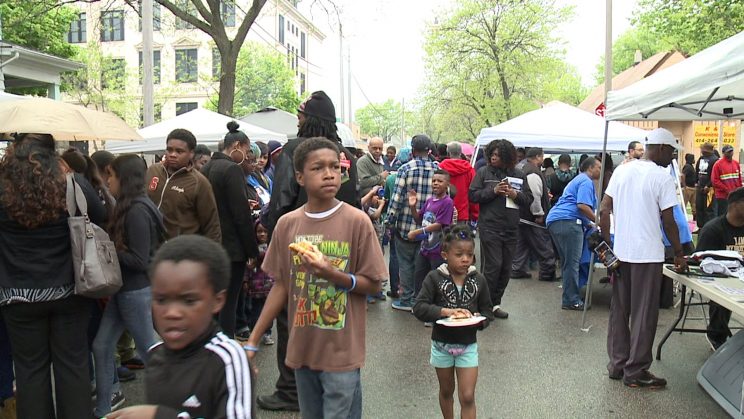
“We must have patience in this process of peace, because brotha’s in both our organizations have to reach that development to understand what peace truly is.” – Cheif Hafezz (Member of the Insane Vice Lords)
Now that flames from Baltimore and Ferguson have settled, we must begin the process of healing the massive wounds from the effects of chronic poverty, poor education and state repression that lays waste to our youth. At the same time, we must be able protect the gains we make with’ mass self-defense. Such a defense must in some way incorporate the youth gangs that act as the unofficial militias of the hood. The Black Panther Party, Brown Berets and Young Lords developed programs that attempted to do just that. Since then, a variety of organizations have picked up where they left off. ‘Heal the Hood Milwaukee’ is one such group. Started off and led by local community members in Milwaukee, Wisconsin, Heal the Hood Milwaukee seeks to end the generations-old war between the Chicago-based “Folks” and “Peoples” gang alliances. They are organizing locally within their neighborhoods both for unified social healing and organized community defense. Their efforts have not been in vain. Every year Heal the Hood MKE manages to draw hundreds of people to their annual block party on Milwaukee’s North side. This year a mass of people gathered to watch Vice Lords and Gangster Disciples shake hands and declare an end to gang warfare between their local sets.
Though the gesture was largely symbolic it must be understood how significant a gesture it was in a city that is rated as one of the top 10 most dangerous cities in the America. As one would expect, the local police are attempting to do whatever possible to disrupt, misdirect and discredit anyone who seeks to forge peace and understanding between Milwaukee’s warring neighborhoods. In days leading up to the event, police harassed local organizers by pulling them over and throwing them into holding cells for petty charges. On the other hand, local media attention was forced to acknowledge that the block party was happening, but outright refused to mention the gang cease fire at the same event. The community must respond by making it our duty as parents, teachers, students, brothers, and sisters alike to unify, organize and educate our people. History has proven that there is no other way to freedom.
For our coverage of the 5th Annual Heal the Hood block party, see our special video below:
References:
http://www.streetgangs.com/crips/blackgangs1920s
http://gangresearch.net/Archives/chicagoarts.html#chicago
https://books.google.com/books?id=95BPyQ-UnaEC&pg=PA170&lpg=PA170&dq=twilight+bey&source=bl&ots=s3p913aXxf&sig=STF_b4sSKy-PNRRmM9q2QOR0GhI&hl=en&sa=X&ved=0CEEQ6AEwCGoVChMIy-fGleurxwIVi5MNCh3xywfw#v=onepage&q=twilight%20bey&f=false
https://en.wikiquote.org/wiki/Tupac_Shakur
http://nationalyounglords.com/ – National Young Lords
http://areachicago.org/the-original-rainbow-coalition/ – Rainbow Coalition
http://www.bbc.com/news/magazine-32250743 – Watts gang treaty
http://www.cnn.com/2012/04/25/us/california-post-riot/index.html?hpt=us_t4 – L.A riots
http://blood-knowledge.com/ – Bloods gang history
http://www.jsonline.com/news/milwaukee/at-heal-the-hood-block-party-violence-countered-with-unity-resilience-b99506485z1-304864521.html – Heal the Hood
